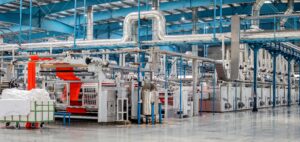Capital
In contrast to natural resources, which occur naturally, capital needs to be produced before it can be used as a resource.
capital
Capital is a resource that has been produced but is also used to produce other goods and services. This factor of production includes machinery, tools, equipment, buildings, and technology.

Businesses must constantly upgrade their capital to maintain a competitive edge and operate efficiently. In the last couple of decades or so, businesses have faced unprecedented technological change and have had to meet the demands of consumers, whose lives increasingly take place in a virtual world. Almost every business has an Internet presence, and many customers are more accustomed to interacting with an online version of the business than a brick-and-mortar store.
You couldn’t use money to make a cake. You could use money to buy the ingredients, mixing tools, and an oven that you could use to bake the cake. The money that you spent makes baking a cake far easier than growing wheat for the flour, making tools by hand, learning how to construct an oven, and so on. But by itself, money can’t produce anything. It’s used to acquire the productive resources that can produce goods and services. You may have heard people talk about “financial capital,” or “investment capital,” which means money; however, in the specific context of describing factors of production, money is not a form of capital.